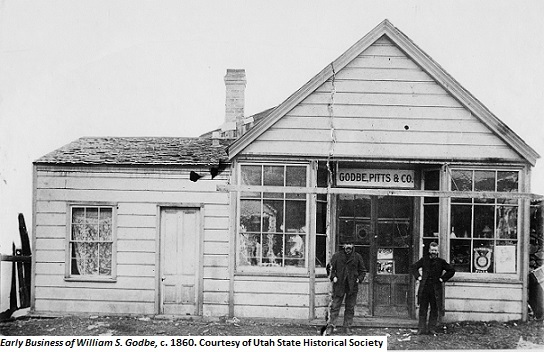Dublin Core
Title
Description
A group of disaffected British Mormons and merchants formed the Godbeite movement after openly declaring their opposition to the LDS Church.
In October 1869, a group of men who had been converted to Mormonism in Great Britain openly declared their opposition to the LDS Church and were excommunicated. This in itself is not especially interesting until you look deeper at the people who formed the Godbeite movement and their legacy. The Godbeites are named after William S. Godbe, a wealthy Salt Lake City merchant and a leader of what was known at the time as “the New Movement.” The Godbeite leaders had grown up in England and valued the British tradition of debate and dissent. Additionally, they were all merchants and supported stronger links between Utah and the East, especially as the transcontinental railroad neared completion. Most of them were also of an intellectual and literary bent.
Early on, the men and women who would become Godbeites were involved in publishing. E.L.T. Harrison and Edward W. Tullidge had published Peep O’Day, perhaps the first magazine in the Intermountain West, with a mildly skeptical tone. Tullidge and T.B.H. Stenhouse both later wrote important histories of Utah. Stenhouse’s wife Fanny wrote an exposé of polygamy. And the group started a journal called Utah Magazine, which later became the Salt Lake Tribune.
Public policy was another of the group’s interests, and they met frequently to discuss it. They criticized Brigham Young’s opposition to precious metals mining and his ban on trade with non-Mormon merchants. They formed the Liberal Party, which was Utah’s first opposition political party.
The group was also drawn to spiritualism and attended séances and invited noted mediums to lecture in SaltLake. The Godbeites founded the Church of Zion and tried without success to get Joseph Smith the Third, the son of Mormonism’s founder, to be its leader. The Godbeites eventually let go of all their enterprises but their Liberal Institute, where they continued into the 1880s to argue for cultural pluralism, racial and sexual equality, and the integration of Utah into the American mainstream.
Creator
Source
Image: Early business of William S. Godbe, c. 1860. Early business building of W. S. Godbe, on the southeast corner of Main and First South Streets. Godbe was a successul merchant and leader of the Godbeite movement. Courtesy of Utah State Historical Society.
_______________
See Ronald W. Walker, Wayward Saints: The Godbeites and Brigham Young, (University of Illinois Press, 1998); “Godbeites,” Utah History Encyclopedia.

